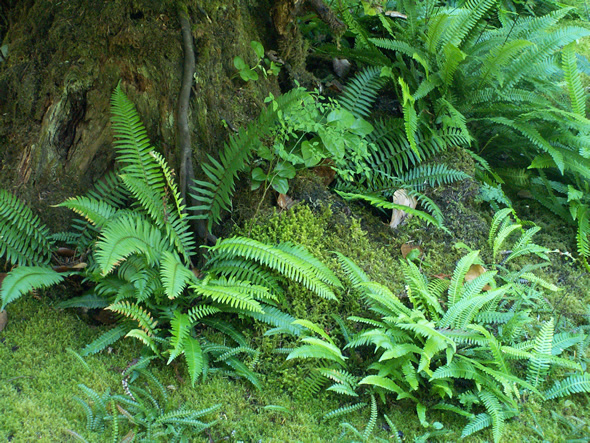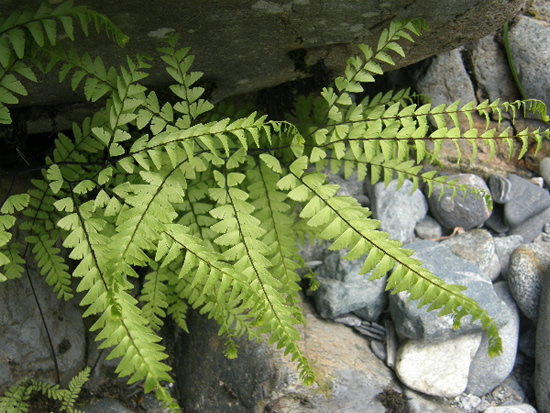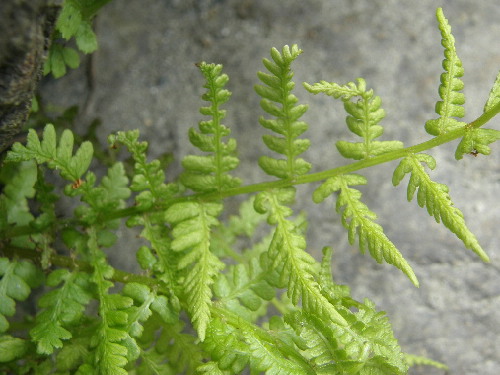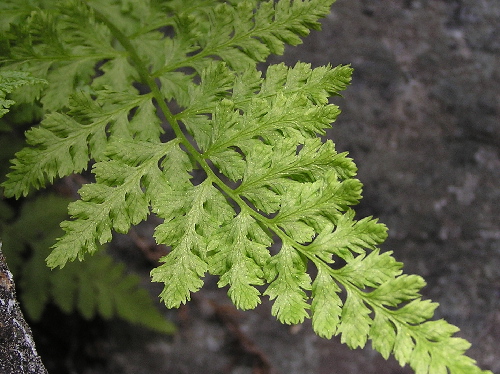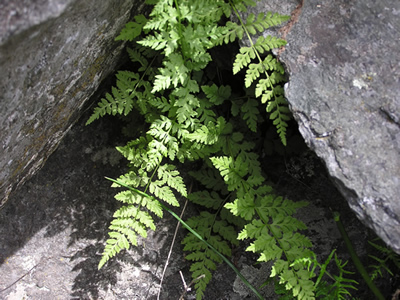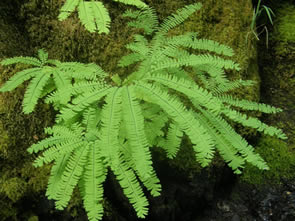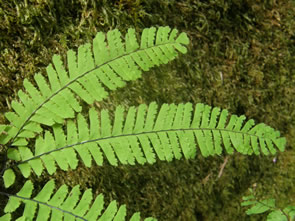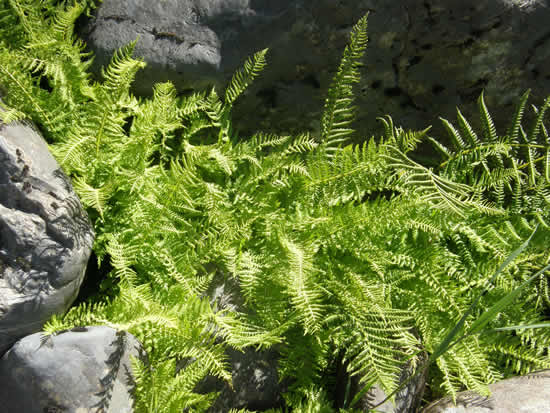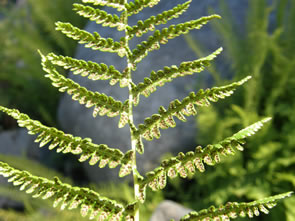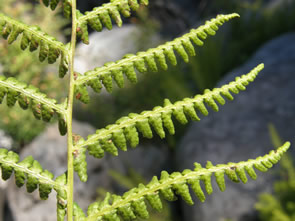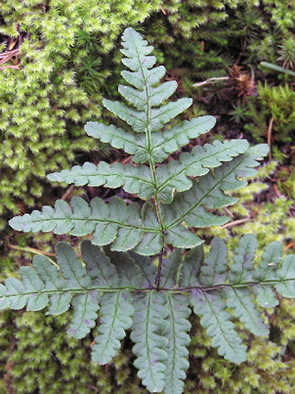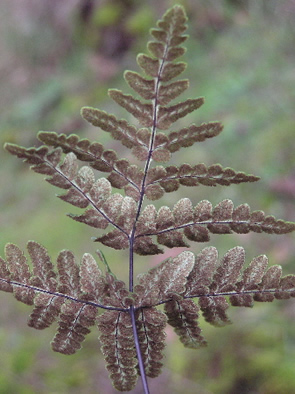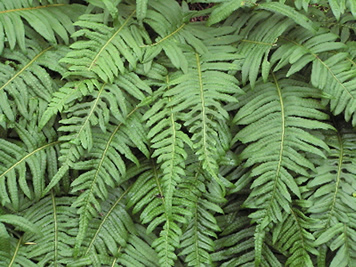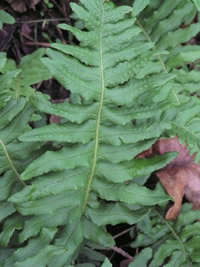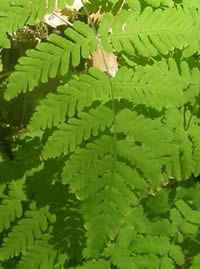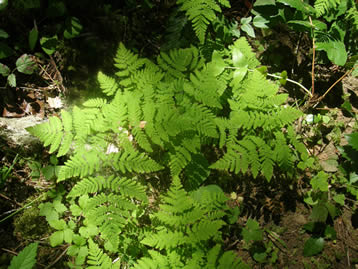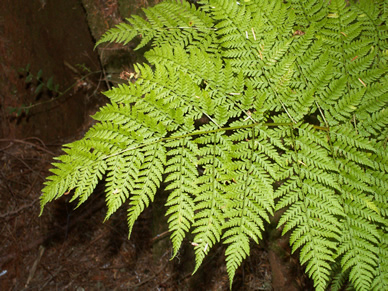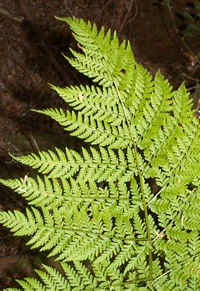Ferns of North America. |
|
|
Strangely, as we wander through the forest trails and the byways, we see so many ferns. We might not realize that they may not be all the same species. There are many ferns that grow in varying habitats from those that we see in clearings in the woods to those on the banks of the highways.
|
|
|
| |
| Others find their niche in the crevices of rocks from sea level to higher elevations. We will share a few images of the various species and show some of the subtle differences. Here we have the Maidenhair fern, Adiantum aleuticum |
|
|
|
This close look at the leaves of the Sierra Marsh Fern, Thelypteris nevadensis, lets you see, when compared with the leaf below, the differences that ferns process. As with the leaves of flowers, each species of fern has its own design.
|
|
|
|
The beauty of these ferns is shown here admirably by Cystopteris Fragilis, the Brittle fern. |
|
| |
| |
Cystopteris Fragilis, is a rock hugger dwelling mostly on cliff faces and damp rocky areas as shown in this picture of it's typical habitat. |
|
| |
Now we come back to this real rock and cliff lover, Maidenhair fern, Adiantum aleuticum. The leaf on the right shows the distinct pattern of this beautiful water loving fern. |
|
|
|
Another fern that we find in the rocks and boulders is the Nevada Marsh Fern, Thelypteris nevadensis. F |
|
|
| |
These two images show the leaf and the underside and surface of the Nevada Marsh Fern, Thelypteris nevadensis.The fronds show the spores and are very narrow and seperated. |
| |
|
| |
Goldenback Fern, Pityrogramma triangularis, is a low growing fern around twelve inches high. Without water during the summer months it remains dormant, The dark green fronds are coated with a yellowish powder on the underside which gives it the common name of glodenbacked. It occurs in rock crevices and at the base of boulders. |
|
|
|
One of the evergreen ferns native to western North America is the Liquorice Fern, Polypodium glycyrrhiza. It is often seen growing on the trunks and branches of trees, but also on rocks, logs and mossy areas. Its name come from its licororice flavored rhizome.
|
|
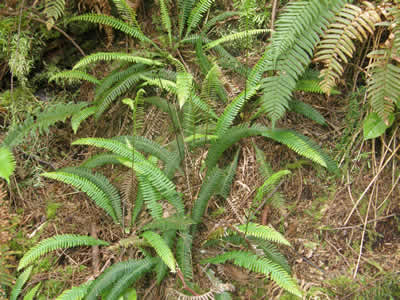 |
|
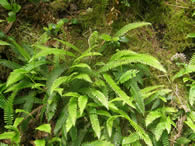 |
Deer fern, Blechnum Spicant. |
|
|
Another evergreen is the Deer fern, Blechnum Spicant. This is a very attractive, compact fern. It is also called the hard fern because of its tough leathery leaves. The leaves are ladder shaped and the older leaves form a rosette near the ground. The new growth is more upright. |
| |
|
| |
Oak fern, Gymnocarpium dryopteris, enjoys the wet sites in cool forests and thickets and streambanks at moderate elevations. The triangular fronds held horizontally help to identify this fern. |
| |
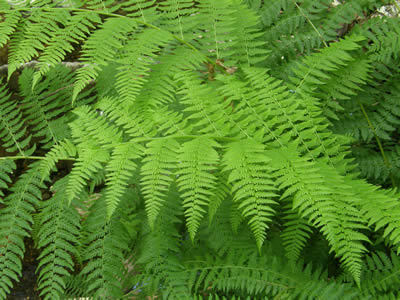 |
|
Lady Fern,
Athyrium filix-femina. |
|
The Lady Fern, Athyrium filix-femina. is a large spreading perennial fern that grows in moist and wet forest thickets and along streambanks. It grows on single stems, each with a single frond. The plant is deciduous dying back in the winter and starting new growth in the spring. |
|
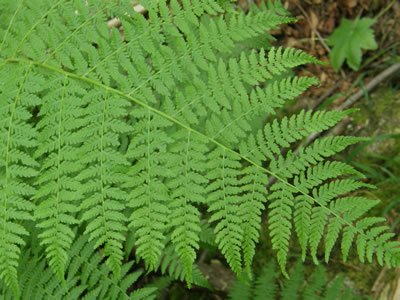 |
|
| |
|
| |
Spiney Wood Fern. Dryopteris expansa, is another fern that will grow well in rock crevices besides doing very well on rotting logs and tree stumps. Like many ferns, it prefers the moist cool conditions that the higher elevations supply. |
|
